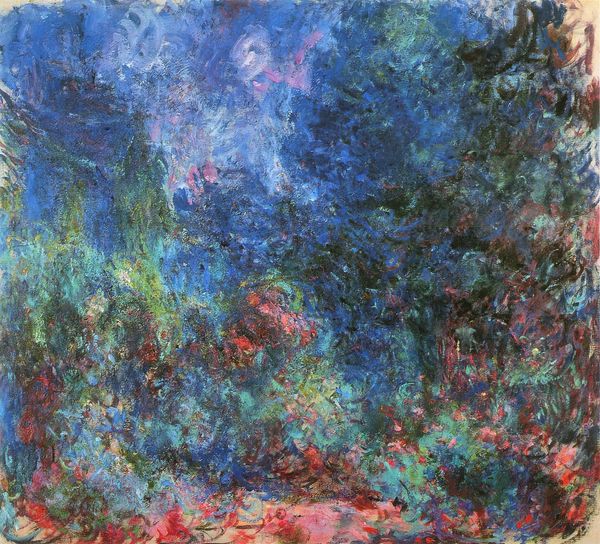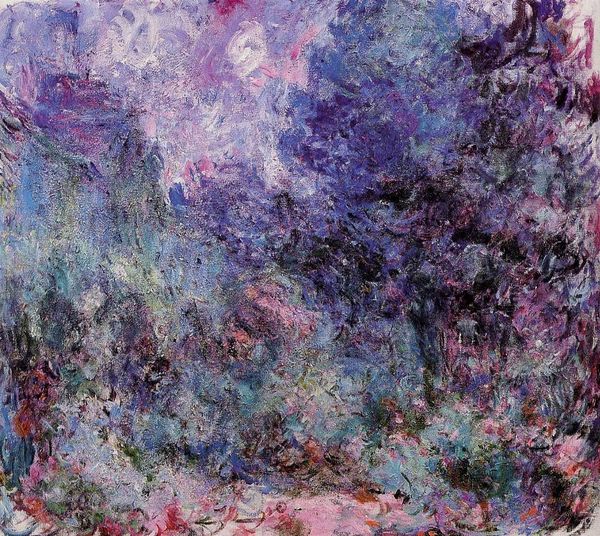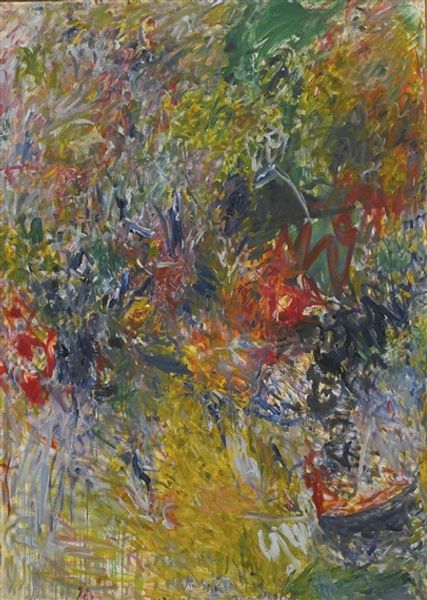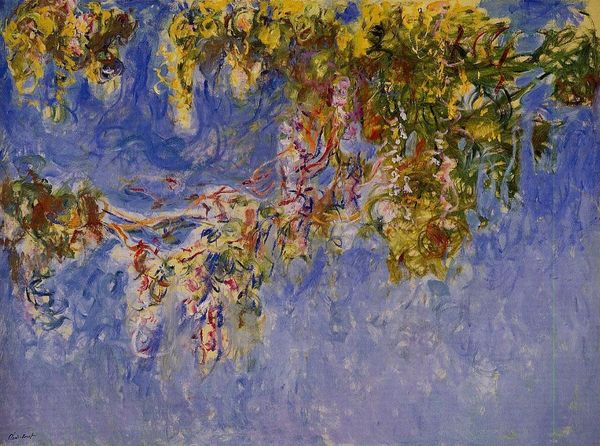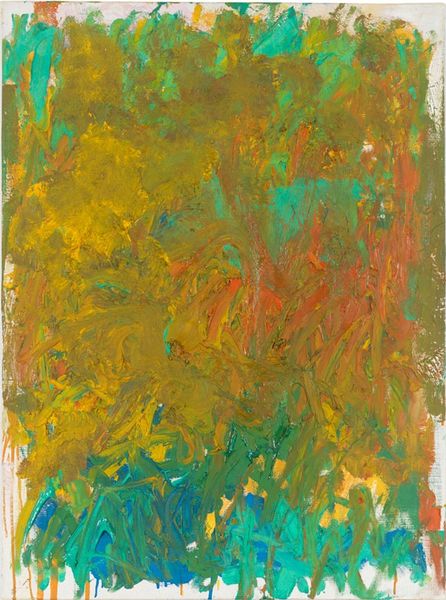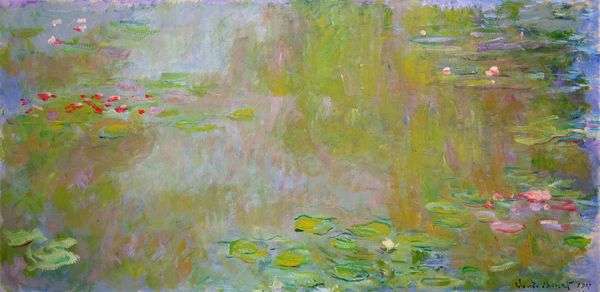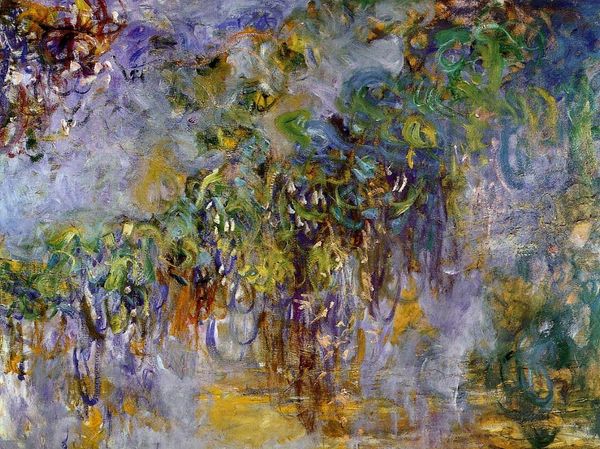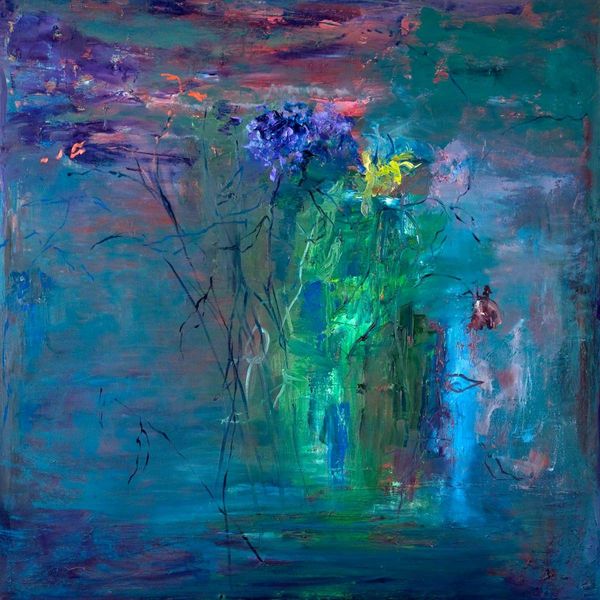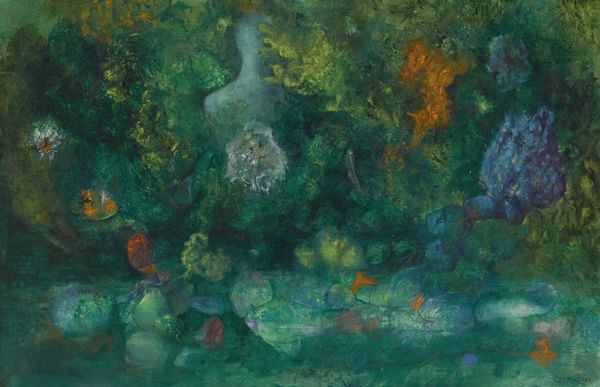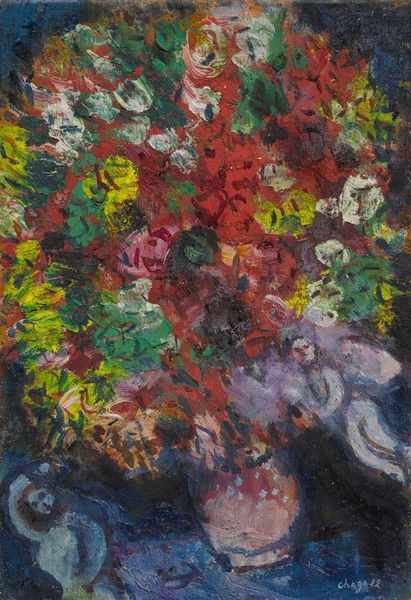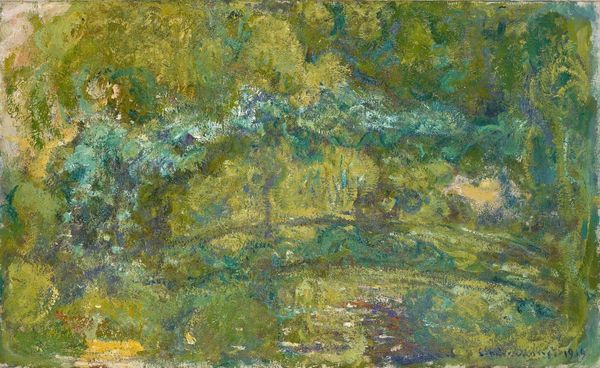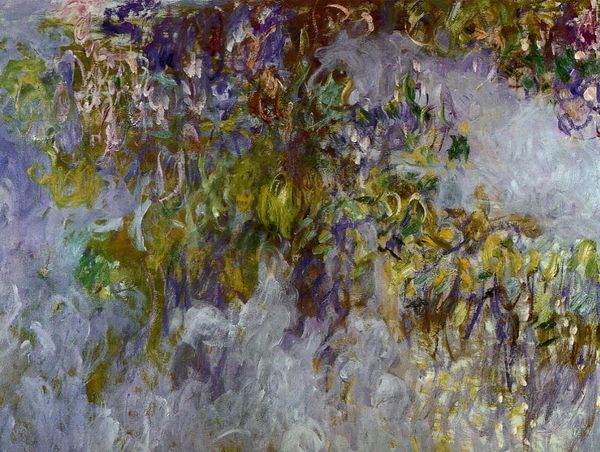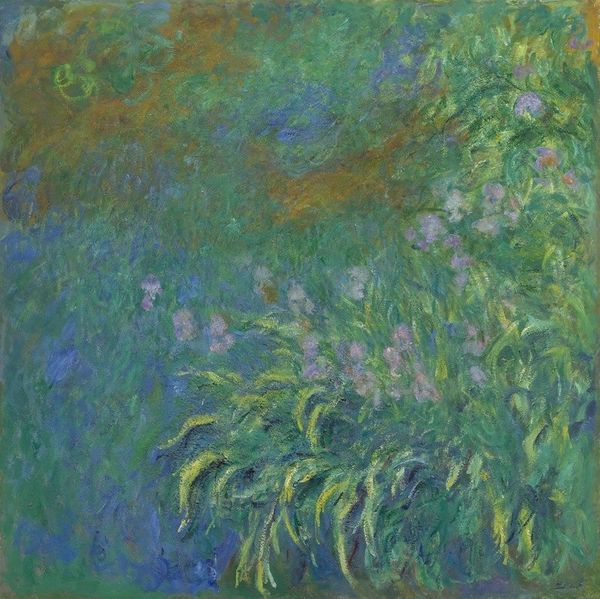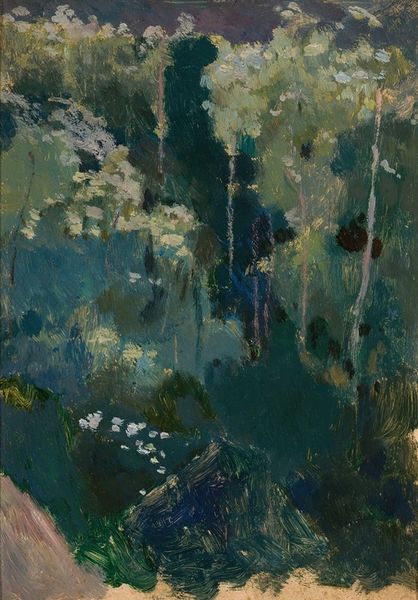
Copyright: Public Domain: Artvee
Curator: Looking at Monet's "Wisteria," painted around 1925, I’m immediately struck by a sense of weightlessness, a cascade of blues and greens that just… float. It feels less like looking at wisteria and more like diving into the essence of it. Editor: Yes, that cascade isn't an accident. Think about how those final touches would’ve involved wielding a heavily loaded brush, dragging those viscous oil paints across the canvas—it’s an intensely physical process belying that ethereal feel. You can almost see him working, the repetitive wrist motions… Curator: Exactly! There's this constant dialogue between the dreamy subject matter and the frankly, grueling, manual work to create the artwork. Did he find respite there, wrestling fleeting images onto the canvas? Monet seems to suggest that even the most delicate beauty requires effort. Editor: Well, and not just effort but materials too. The costs associated with importing specific pigments during that time shaped which colors, which feelings even, Monet could realistically depict. It's fascinating how external constraints end up subtly altering internal visions, right? And the support canvas too. Its sizing would be another production decision, in line with the artist’s access and budgets for large-scale working at Giverny. Curator: I like that observation, how something so serene can be traced back to the economics of paint supply. For me, seeing "Wisteria," I am submerged in the emotion—almost drowning in a pleasant, colourful haze. Editor: Submerged, perhaps suffocated, a little! In some lights, the overwhelming sameness in texture hints at the kind of labour conditions that enable the leisure we ascribe to "art," particularly Impressionism with its obsession with the dematerialisation of work, isn’t it ironic! Curator: Oof, you and your context always make me rethink. Although those thoughts add another perspective layer that is, actually, part of what makes this an enduring artwork. Editor: Precisely. Thinking about what made “Wisteria” makes appreciating its emotional landscape that much more substantial, I believe.
Comments
No comments
Be the first to comment and join the conversation on the ultimate creative platform.
